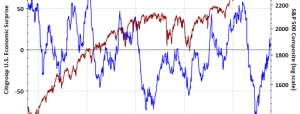Buy Amazon Ahead Of Earnings Today On Strong EPS Estimate Revisions
Global e-commerce giant Amazon.com Inc. ( – ) is set to report fourth-quarter 2024 on Feb. 6, 2025, after the closing bell. The stock currently carries a Zacks Rank #2 (Buy) and has an of +4.78%. Our research shows that for stocks with the combination of a Zacks Rank #3 (Hold) or better (Rank #1 or 2) and a positive Earnings ESP, the chance of an earnings beat is as high as 70%. These stocks are anticipated to appreciate after their earnings release. You can uncover the best stocks to buy or sell before they’re reported with our . Factors to ConsiderAmazon is gaining on solid Prime momentum owing to ultrafast delivery services and a strong content portfolio. Strengthening relationship with third-party sellers is a positive. The growing adoption of the AWS services portfolio is aiding AMZN’s cloud dominance. A robust advertising business is also contributing well. Amazon’s strong global presence remains a key growth driver. Deepening focus on generative AI is a major plus. AMZN’s AWS is the largest cloud service provider beating Microsoft Corp.’s ( – ) Azure and Alphabet Inc.’s ( – ) cloud services. AMZN reported record business in the 2024-25 holiday season in terms of both sales and items sold.Also, the improving AI-powered Alexa business, along with robust smart home product offerings, is acting as a tailwind. Growing capabilities in grocery, pharmacy, healthcare and autonomous driving are the other positives. We expect 2024 net sales to increase 10.7% from 2023.The chart below shows the price performance of AMZN compared with other “Magnificent 7” stocks in the past month.Image Source: Zacks […]
Bank Of England Cuts Rates To 4.5%, Signals Monetary Easing Amid UK Economic Slowdown
Image source: The Bank of England cut interest rates by 25 basis points to 4.5%. Inflation fell to 2.5% in December, fueling expectations for monetary easing. Some analysts believe the bank will take a measured approach to further rate cuts. The Bank of England made its first interest rate cut of 2025 on Thursday, resuming monetary easing amid ongoing concerns over sluggish growth in the British economy.The saw the central bank lower its benchmark interest rate by 25 basis points to 4.5%, marking the third cut in the current cycle following reductions in August and November last year.The Monetary Policy Committee voted 7-2 in favor of the cut, with two members advocating for a more aggressive 50-basis-point reduction.The decision comes as UK inflation continues to decline, dropping to 2.5% in December, moving closer to the central bank’s 2% target.In a statement, the bank said,There has been substantial progress on disinflation over the past two years, as previous external shocks have receded, and as the restrictive stance of monetary policy has curbed second-round effects and stabilised longer-term inflation expectations. That progress has allowed the MPC to withdraw gradually some degree of policy restraint, while maintaining bank rate in restrictive territory so as to continue to squeeze out persistent inflationary pressures. Bank of England’s decision driven by weak growth, falling inflation The Bank’s decision follows a series of lackluster economic reports.The UK economy flatlined in the third quarter of 2024, with monthly GDP data showing a modest 0.1% expansion in November after […]
Risk-On Sentiment Endures, Despite Trade Uncertainty
Years ago there was a about a kids’ toy called Weebles, which “wobbled but they don’t fall down.” The line comes to mind in reviewing recent market activity. Since returning to the White House last month, President Trump has outlined a wave of policy changes, plans and comments that have roiled markets and shaken expectations about the economic outlook. But for the moment, the latest squalls of volatility have come and gone, leaving an upside trend that’s a bit battered but mostly intact.As usual in these periodic to assess the crowd’s appetite for risk, I’m looking at a set of ETF pairs — in this case using data through yesterday’s close (Feb. 5). For a big-picture perspective consider the ratio for an aggressive global asset allocation mix () vs. its conservative counterpart (). Despite recent turbulence, the trend remains the same: positive in a non-trivial degree.The to-and-fro is more pronounced when focusing on US stocks, but the ratio of the broad market-cap-weighted market portfolio () vs. a low-volatility alternative () has rebounded sharply.Turning to relative performance of US shares vs. foreign counterparts in developed markets suggests the American bounceback has gone too far too fast. The ratio for (a proxy for the total US equities market) vs. its developed-market ex-US counterpart () surged recently in favor of American stocks. Using history as a guide suggests caution in expecting the relative outperformance for the US to continue in the degree of late.Turning to US Treasuries, the case for favoring relatively shorter maturities () […]
Equity Bulls Welcome Weakness Emanating From DeepSeek And Tariff Jitters For Now
Equity bulls bought weakness owing to DeepSeek and tariff jitters. Near term, the major indices act like they want higher prints. Mid- to long-term, the outlook gets muddied thanks to uncertainty owing to the new administration’s trade policy in particular.As of Tuesday this week, Investors Intelligence bullish percent rose 1.7 percentage points week-over-week to 49.2 percent, while the bearish percent increased seven-tenths of a percentage point to 30.2 percent. Bulls hit a 67-week low of 42.4 percent in the week to January 14, while the bearish count of 16.1 percent in the week to December 3 was at an 18-week low. When the bullish count hit that low last month, the ratio of bulls to bears reached a two-year low of 1.32, representing a sharp drop from 3.91 in the week to December 4. This week, the ratio reached an oversold 1.63, and, if past is prologue, has room to continue higher (Chart 1).The S&P 500 bottomed in the same week that the bulls-to-bears ratio hit the two-year low, ticking 5773 intraday on January 13. By then, the large cap index was down 5.4 percent from the all-time high of 6100 posted on December 6. As sentiment began to lift from the oversold territory it was in, the S&P 500 eclipsed that high on January 22, followed by a new intraday high of 6128 two sessions later.Then came the DeepSeek-induced selloff on the 27th, touching 5963 intraday. That weakness was bought, culminating in 6121 by the 31st – a reversal session […]
DOGE & Deficits. The Corn & Ethanol Report
Image Source: We kickoff the day with Challenger Job Cuts at 6:30 A.M., Export Sales, Initial Jobless Claims, Nonfarm Productivity QoQ Prel, Unit Labour Costs QoQ Prel, Continuing Jobless Claims, and Jobless Claims 4-Week Average at 7:30 A.M., EIA Natural Gas Storage at 9:30 A.M., 4-Week & 8-Week Bill Auction at 10:30 A.M., 15-Year & 30-Year Mortgage Rate at 11:00 A.M., Fed Waller Speech at 1:30 P.M., Fed Daly Speech at 2:30 P.M., Fed Balance Sheet & Total Vehicle Sales at 3:30 P.M.The US trade deficit worsened to $98.4 billion in December, $19.5 billion more than in November and $33.5 billion more than a year ago. UIt was the 2nd largest 1-month deficit, behind March 2022, when the US marked a $102 billion deficit. It was also the most significant 1-month increase in the trade deficit on record and the 2nd largest annualized change. US imports in December rose 3.5% to a record large $365 billion. Goods imports jumped $11.4 billion to $71.8 billion. US exports fell by $7.1 billion from November to $266.5 billion. The largest annual trade gaps were with China (-295.4 billion), the EU (-235.6 billion), Mexico (-171.8 billion), and Vietnam (-123.5 billion). The trade gap with Canada is + $ 63.3 billion. It is expected US President Trump will soon target each of the 4 nations to secure additional US goods, or face import tariffs to protect US businesses. South American Weather Pattern DiscussionDrying Ahead for Mato Grosso/Goias/Sao Paulo; Heavy Rain Aids Pod/Kernel Weight Stabilized:The South American pattern […]







